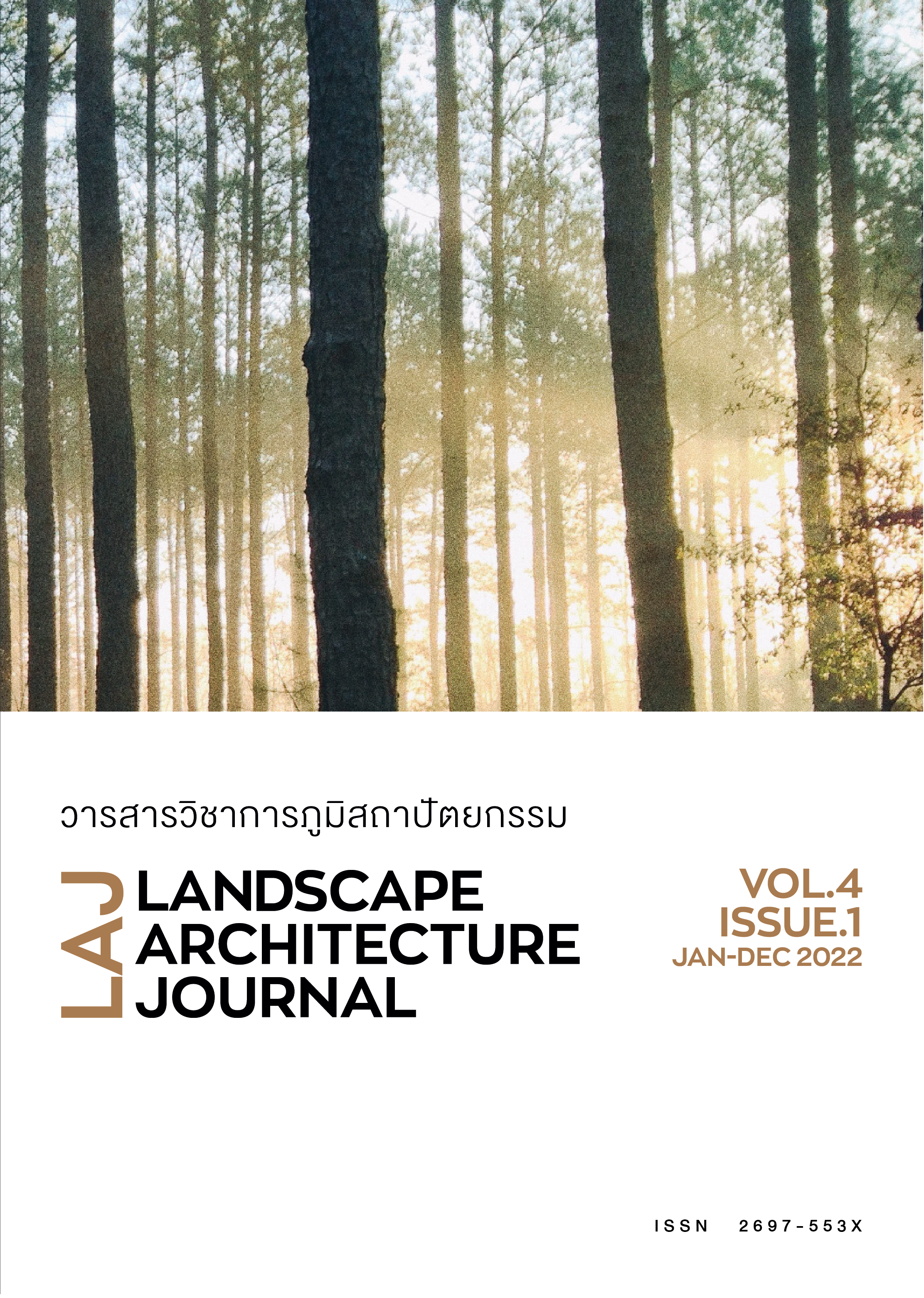An Applying of the Geographic Information System (GIS) for Searching of the Potential Sustainable Green Space or Public Green Space: A Case Study of Pahsak Subdistrict Municipality, Lamphun Province
Main Article Content
Abstract
This research article applies the Geographic Information System (GIS) for searching of the potential sustainable green spaces. There are collecting data and green space categorizing of the Pahsak Subdistrict Municipality, Lamphun Province. The outcomes are quantitative data and geographical mapping, the Pahsak Subdistrict Municipality is an urban community where encounters with the setting of the Northern Region Industrial Estate extension. The extension setting situates in the Pahsak Subdistrict Municipality with 2,300 Rais of its Industrial Park. Results of analysis applying the Geographic Information System (GIS) in searching of the potential sustainable green spaces found 2 cases consideration as follow, 1) Protection of the potential sustainable green space conservation, there is 10,722,000 Square metres (Sq.m) or 25.68% of all spaces. 18.64% of this conservation space is a sustainable public green space that consisting of; 1.1) Sustainable green space for conservation of the Public Land as a natural green space 1.2) Sustainable green space for conservation of the Public Land as 2 green spaces along the infrastructure lines 1.3) Sustainable green space for conservation of the Public Land Certificate (PLC.) as 7 initial quantitative potential green spaces toward sustainable urban green space conservation and protection 2) Searching for development of the green space of the Public Land Certificate (PLC.) where meets potential development for public green space with local voices participation. This case is consisted of 2.1) 8 potential green spaces of the Public Land Certificate (PLC.) for development 2.2) 5 potential green spaces of the Public Land Certificate (PLC.) for recreation. In summary, the research intends to protect and develop the urban green spaces applying the Geographic Information System applying as a basic database for the green space administration. Including with a guideline of green area design, presenting on a core concept attributes that protection of the sustainable green space will finally supports to the urban public benefits and qualitative green spaces existing.
Article Details

This work is licensed under a Creative Commons Attribution-NonCommercial-NoDerivatives 4.0 International License.
References
การนิคมอุตสาหกรรมแห่งประเทศไทย. (2562). คู่มือการตรวจประเมินเพื่อให้การรับรองการเป็นเมืองอุตสาหกรรมเชิงนิเวศ
ระดับ Eco Champion. กรุงเทพฯ: การนิคมอุตสาหกรรมแห่งประเทศไทย.
ชนกนันท์ ปิ่นตบแต่ง, และ ฉมาวงศ์ สุริยจันทร์. (2561). การวิเคราะห์การวางผังนิคมอุตสาหกรรมในพื้นที่ภาคกลางตอนล่าง ของประเทศไทย ภายใต้ข้อพิจารณาทางภูมิสถาปัตยกรรม กรณีศึกษา นิคมอุตสาหกรรมสมุทรสาคร. สาระศาสตร์. (4), 794-796.
ทิฆัมพร หัดขุดทด, เยาวเรศ จันทะคัต, และ ปฐมาวดี คุ้นกระโทก. (2563). การศึกษาพื้นที่สีเขียวด้วยหลักการจัดการพื้นที่ชุมชนเมืองอย่างยั่งยืน กรณีศึกษามหาวิทยาลัยเทคโนโลยีราชมงคลอีสาน นครราชสีมา (ศูนย์กลาง). วารสารวิชาการเพื่อการพัฒนาพื้นที่. 1(3), 3.
สถาบันสิ่งแวดล้อมไทย. (2555). คู่มือการประเมินเทศบาลน่าอยู่อย่างยั่งยืน. กรุงเทพฯ: กระทรวงทรัพยากรธรรมชาติและสิ่งแวดล้อม, กรมส่งเสริมคุณภาพสิ่งแวดล้อม.
สำนักงานนโยบายและแผนทรัพยากรธรรมชาติและสิ่งแวดล้อม. (2550). คู่มือการจัดการพื้นที่สีเขียวชุมชนเมืองอย่างยั่งยืน. สืบค้นจาก http://www.onep.go.th/ebook/eurban/eurban-publication-07.pdf
สำนักงานนโยบายและแผนทรัพยากรธรรมชาติและสิ่งแวดล้อม. (2560). แนวทางการจัดการพื้นที่สีเขียวสำหรับชุมชนเมืองในประเทศไทย. สืบค้นจาก http://www.onep.go.th/ebook/eurban/eurban-publication-02.pdf
สำนักงานนโยบายและแผนทรัพยากรธรรมชาติและสิ่งแวดล้อม. (2562). แนวทางการขับเคลื่อนการจัดการพื้นที่สีเขียวอย่างยั่งยืน. สืบค้นจาก http://www.onep.go.th/ebook/eurban/eurban-publication-20190527.pdf
สำนักงานนโยบายและแผนทรัพยากรธรรมชาติและสิ่งแวดล้อม และ มหาวิทยาลัยแม่โจ้. (2564). คู่มือการใช้ประโยชน์ฐานข้อมูลสารสนเทศภูมิศาสตร์. กรุงเทพฯ: _____.
Claire, W.H. (1973). Handbook on Urban Planning. NY: Van Nostrand and Reinhold.
Kelcey, J. (1978). The Green Environment of Inner Urban Areas. Environmental Conservation, 5(3), 197-203. DOI:10.1017/S0376892900005944

